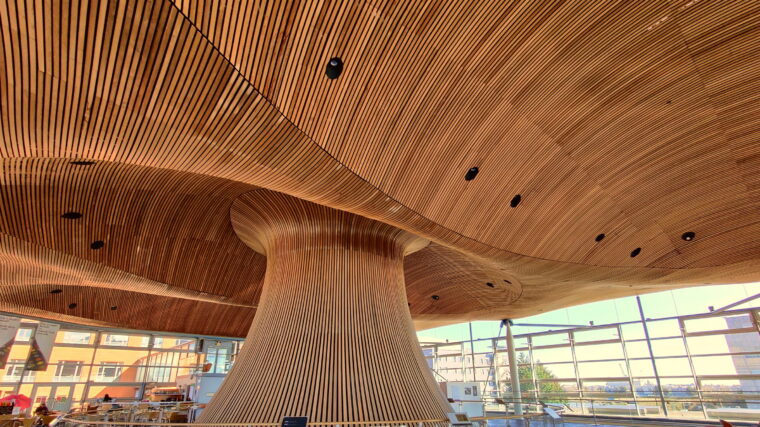Saluti da Bologna!
A long time ago, in a European country far, far away, the notion was stirring that learning might get you somewhere in life. (This was already known in other parts of the world, as my posts on Taxila, Nalanda, Fez and Al-Azhar show.) One place in which there were plenty of learned men from who to learn was Bologna, and it is to there that we travel today.
This is the eleventh century (that is, years beginning with 10xx CE) and Bologna was a centre for the study of law, because it was itself the centre of some controversy. Having been part of the Carolingian empire, it seems that the city – and others like it – were wanting more autonomy. (After all, there were some alps between them and Aachen, so out-of-sight, out-of-mind, I guess.) But it was also in the buffer zone between the papacy and the Holy Roman Emperor. So they needed to grow lawyers to try to keep disputes in courts and not on battlefields.
Students travelled to Bologna to study under these men, in what were private arrangements (that is, not under forms established by the state). Now, at that time, Bologna’s laws included collective punishment for crimes committed by foreigners (that is, if a foreigner committed a crime, all of those in Bologna from that nationality were liable for punishment.) Students – to protect themselves – formed collectives, known as nations; and these nations then became the groups who hired professors to teach.
(You might at this point want to check out the learned Mike Ratcliffe’s presentation on higher education history, which includes an early slide on Bologna.)
The students were definitely in charge, policing teachers’ attendance and punctuality in delivering lectures and requiring of teachers an oath to obey the students. Eventually the nations grouped together still further, forming what was known as a studium. From this position of strength they were able to negotiate collectively with the city itself, and collective punishment was dropped.
It seems, by the way, that the studium was established in 1088; this is the date now mostly used for the establishment of the university, although charters and so forth didn’t come until later. And after the studium had been established, the teachers also sought to rebalance the power, and formed collegia doctorum, or doctors’ committees in each subject area. This enabled them to assert the right to set examination fees and to determine the criteria for admission to a degree. The different elements of a university were beginning to come into place.
Now, I’m not a historian, and I’m definitely not a historian of the Holy Roman Empire, so to be honest the to-ing and fro-ing at this point gets a bit much for me. There were contests – some bloody, some wordy – between the papacy and the empire; sometimes one was on top, sometimes the other; the city states in the north of Italy grew in strength and autonomy; there were changes in leaders, plots and all sorts. Guelphs and Ghibellines, that sort of thing. Suffice to say that the University of Bologna was ultimately a beneficiary, gaining the emperor’s protection, and a charter (1158). And so the de facto university became one de jure.
In 1219 the Pope – Honarius III – muscled in, insisting that the archdeacon of Bologna was the only office empowered to award the licentia docendi, or permission to teach. By 1278 the city of Bologna became part of the papal states – no longer under the Holy Roman Emperor – and in 1291 the licentia docendi of Bologna was ruled as being valid anywhere. At this time only law graduates could get a licentia docendi; as a few years later arts graduates could also gain the license to teach.
Also at this time, the students of the other faculties – rhetoric, notary, medicine and philosophy – set up their own university in the city. No conditions of registration for them!
In the following century there was yet more strife, and the politics impacted upon Bologna. This is the period when there was a Pope in Avignon and an Anti-Pope in Rome. To cement power, the Pope sent a legate who ruled in Bologna, and ruled despotically. Ownership of the city changed hands several times, but the influence of the university continued: teachers were often selected for fulfilling government and religious office. And in 1381 the city took action against the studium. Four Reformers of the Studium were to be elected each year, who would agree the contracts with teachers; the curricula and the subjects to be taught, and who would appoint the Punctator, the person in charge of ensuring the proper functioning of the university. The university had very much become a civic creature. And, for those so minded, there are some splendid role titles to consider resurrecting.
Bologna was changing. As new forms of government were enacted in the late 1300s, the city became more self-confident, and also more insular. University teachers were put on the public payroll, and with a very few exceptions only Bolognese citizens could teach at the university. This led over time, inevitably, to a decline in the quality of the teaching and education at Bologna.
One feature of the University Bologna at this stage which, to modern minds seems very odd, is that it didn’t have central premises. Teaching took place in private houses or rented halls – a throwback to the days of students hiring professors. This changed in the mid-16th century, as part of the more general rebuilding of the centre of Bologna. But is also enabled greater control over the university by the city authorities.
Over the next couple of centuries the university was also drawn into the counter-reformation, with scholars leaving the university, and more timid academic appointments being made (Galileo Galilei passed over for the professorship of astronomy, for instance.)
In the 1600’s, the university went further into a decline. Professorships salaries increased, and they became even more seen as a sinecure for local noble families. It is suggested by the University’s own history that at one point there were four professors for each student. But not many of them were any good. As the university ossified, and teaching stagnated in line with the doctrinal positions of a very conservative church, a few students sought to change things. The Academy of the Restless was established – a private club for discussion. In time this became part of the Academy of Sciences of the institute of Bologna: intellectual life was thriving, despite the university!
Fast forward to the late 1700s, and revolution was in the air. Failed, in Bologna, but alive in France. In 1796 French troops entered Bologna, overthrowing the existing government. Reform of the university and its curriculum followed, as well as a move to new buildings. Italy was having a turbulent century, but as the modern state gradually coalesced, the University adopted more and more modern practices, with new faculties covering more branches of knowledge.
The University was ingloriously fascist led during Mussolini’s reign; and the later twentieth century was also marked by disputes and unrest. But it was also a time for intellectual ferment and reinvention. In 1988, at its 900th anniversary celebrations, hundreds of university presidents, vice-chancellors and rectors from around the world signed the Magna Charta Universitatum; and the process of harmonization of European university qualifications is named the Bologna process in part after the university.
This is an inadequate telling of the university’s story, but it isn’t, I think, fundamentally wrong. The University’s website has much detail, and probably reads better in Italian.
And a positive note: despite its being overwhelmingly male for most of its history, the university hasn’t been entirely so. In 1237 Bettisia Gozzadini graduated in law from the university, and in 1239 was appointed lecturer. And in 1732 Laura Bassi became the first woman to be awarded a doctorate in science, and only the second to be awarded a PhD.
One final thing to say: matriculation at Bologna looks a lot more fun than enrolment at most UK universities is today. A basket of hats! A lion! Minerva! No wonder they’re all queuing nicely.
The card was sent ‘Alla Gentil Signorina Lina Mattia, via S Stefano 36, Bologna” in the most wonderful copperplate. It was sent in the days before split-back cards so there’s no message, or anything to indicate who it is from. If I can read the postmark correctly, it was posted on 28 September 1899. Here’s a jigsaw of the card – hope you enjoy it.












